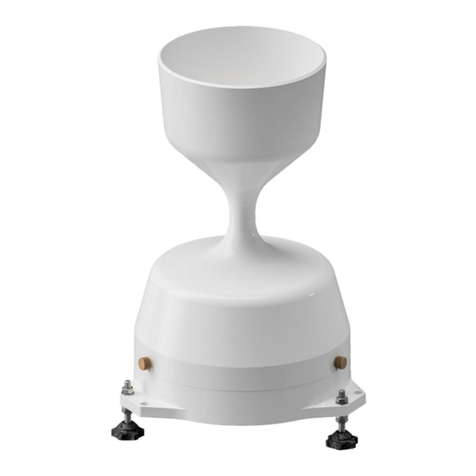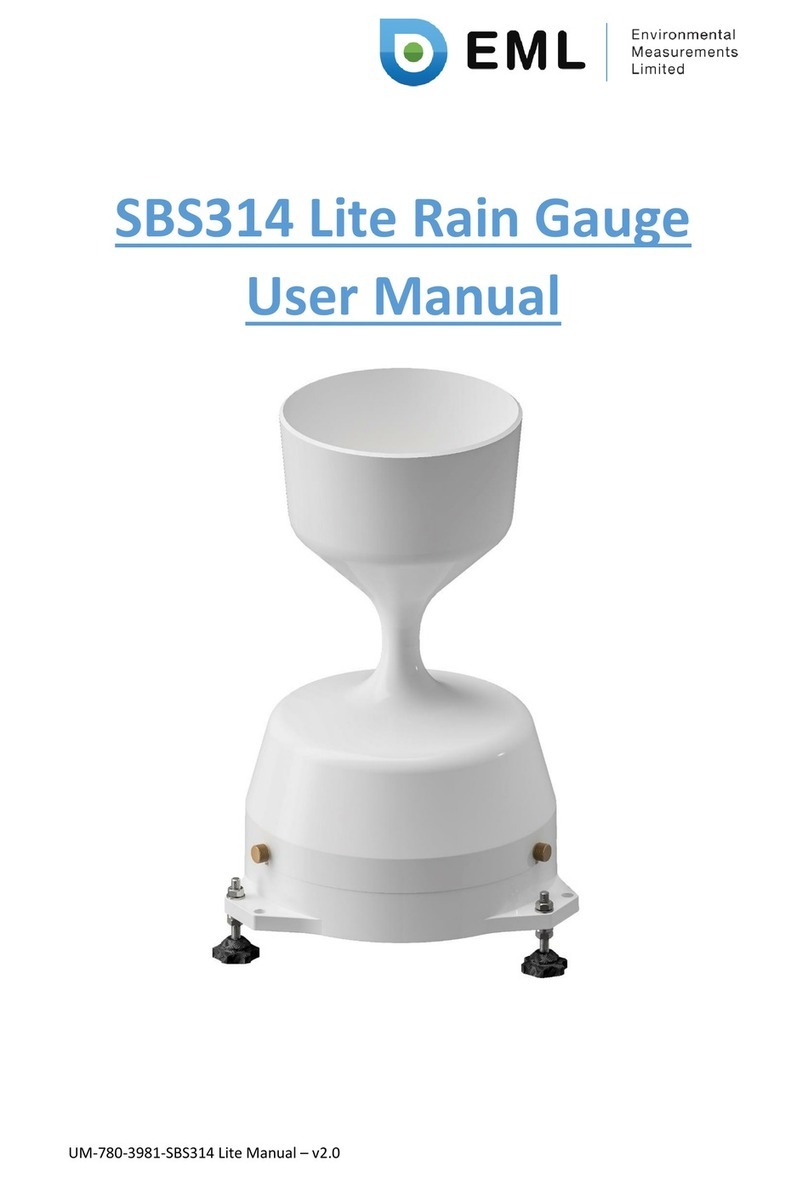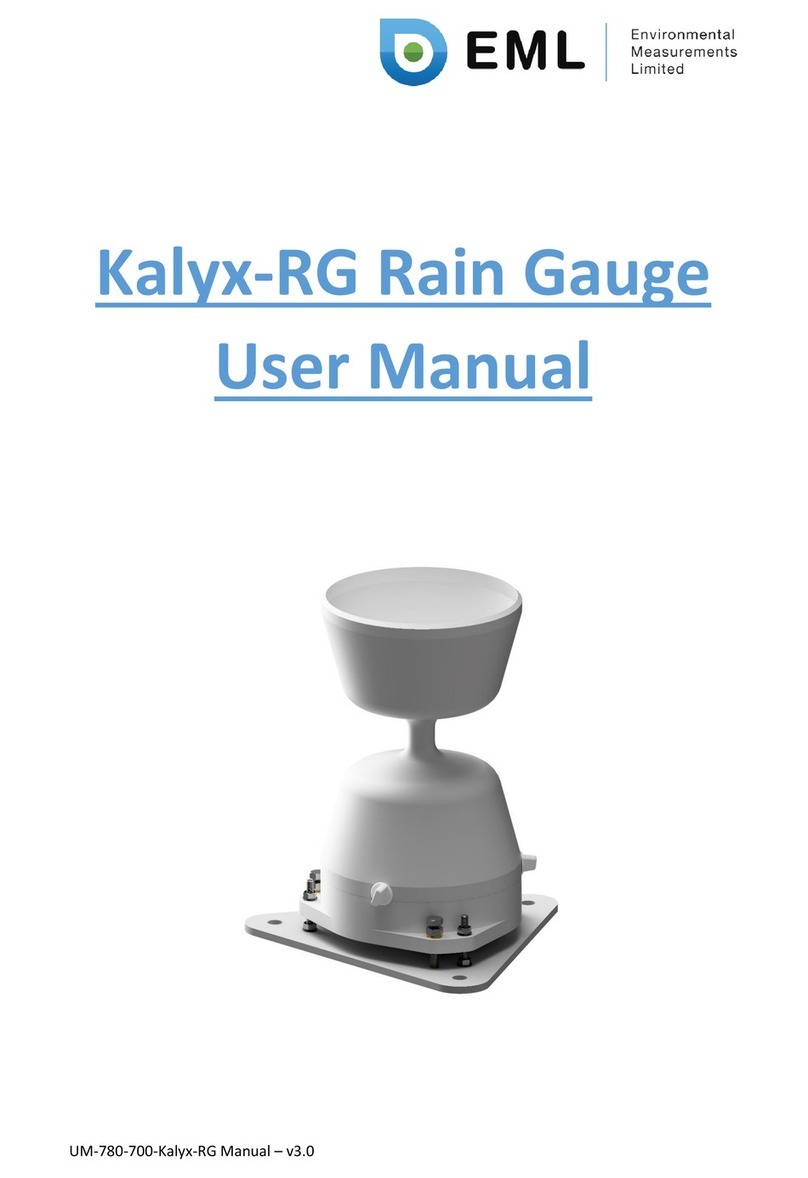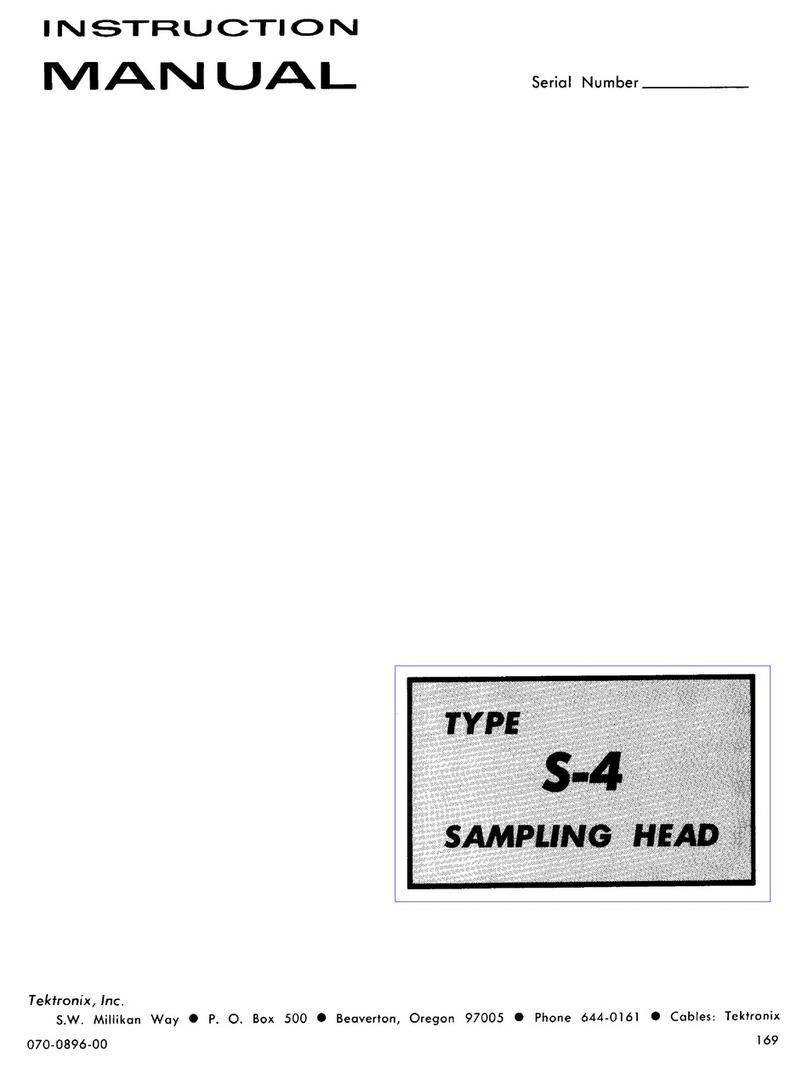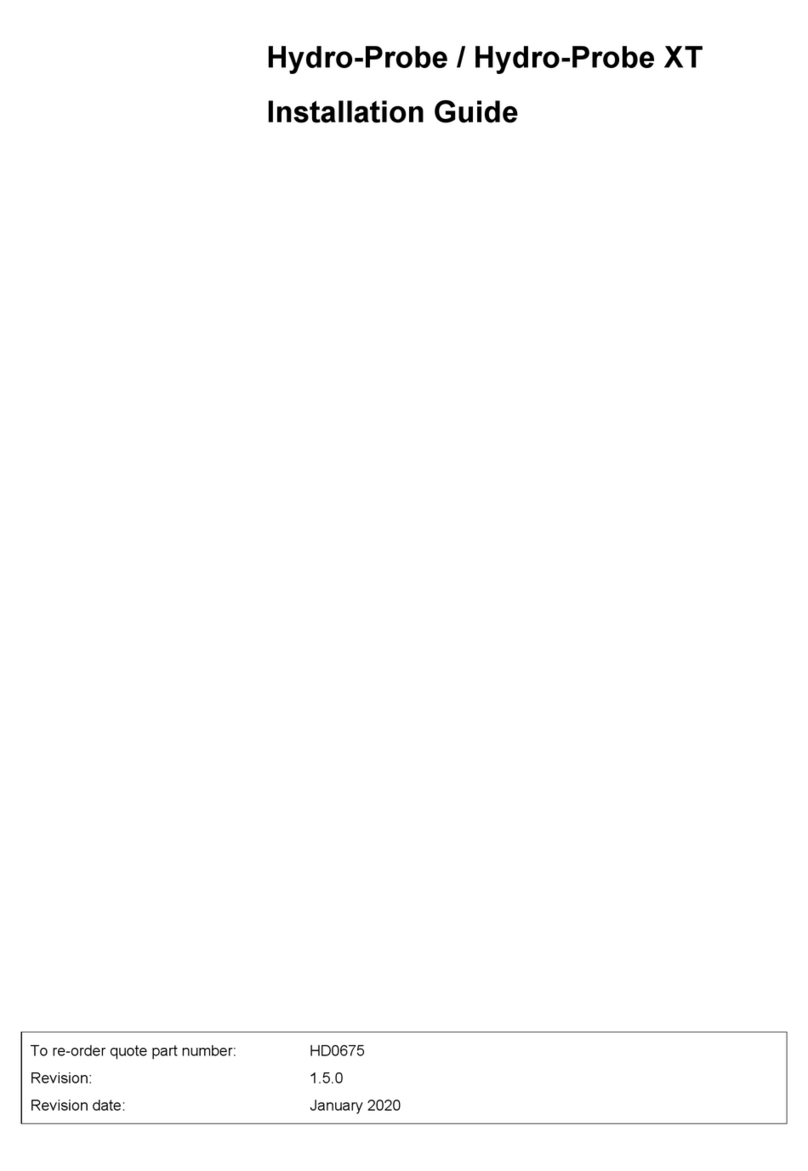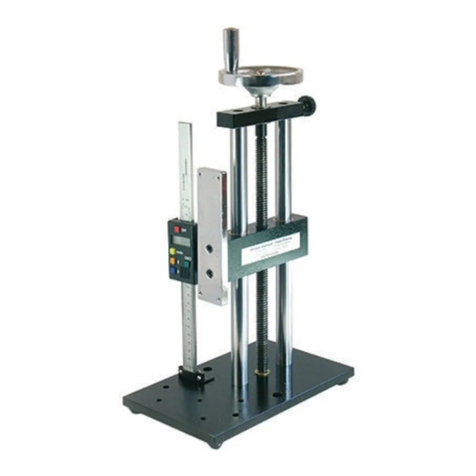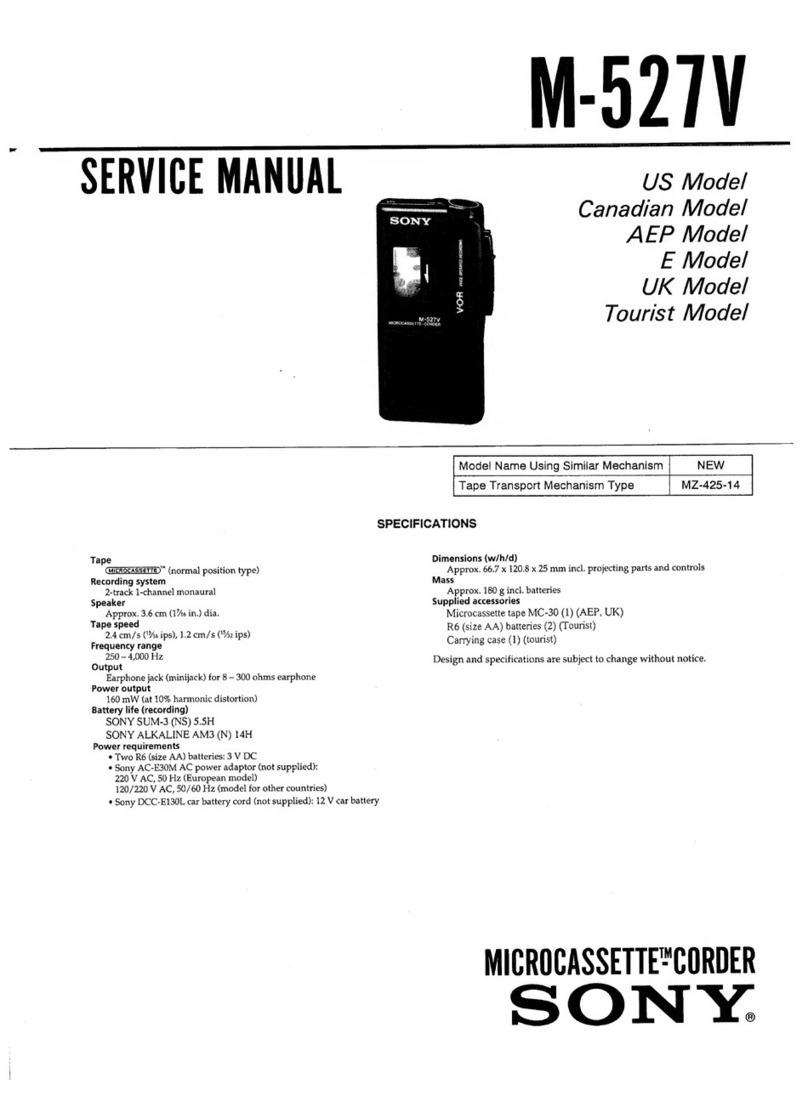EML ARG100 User manual

UM-780-001-ARG100 –V1.00
ARG100 Rain Gauge
User Manual

UM-780-400-SBS Manual –V2.00 2 | P a g e
PUBLISHED BY
Environmental Measurements Limited (EML)
7 Jupiter Court
Orion Business Park
North Shields NE29 7SE
United Kingdom
Visit our internet pages at http://www.emltd.net
©EML 2017
No part of this manual may be reproduced without any form or by any means, electronic or
mechanical (including photocopying), nor may its contents be communicated to a third party
without prior written permission of the copyright holder.
The contents are subject to change without prior notice.
Please observe that this manual does not create any legally binding obligation for EML
towards the customer or end user. All legally binding commitments and agreements are
included exclusively in the applicable supply contract or Conditions of Sale.

UM-780-400-SBS Manual –V2.00 3 | P a g e
Table of Contents
List of Figures ..........................................................................................................................................4
List of Tables ...........................................................................................................................................4
1. General Information.......................................................................................................................5
About this Manual .............................................................................................................................. 5
Version Information........................................................................................................................5
Related Manuals .............................................................................................................................5
2. Introduction.................................................................................................................................... 6
3. Site and Installation Requirements ...............................................................................................6
Choosing a site ....................................................................................................................................6
Levelling the rain gauge ......................................................................................................................6
Baseplate method of levelling ............................................................................................................7
Paving slab method of levelling ..........................................................................................................8
Levelling the rain gauge using a spirit level ........................................................................................8
Alternative mounting options.............................................................................................................8
4. Wiring Guidelines ...........................................................................................................................9
ARG100/STD rain gauge...................................................................................................................... 9
ARG100/EC rain gauge........................................................................................................................9
ARG100/STD rain gauge with Limpet XL datalogger...........................................................................9
5. Operation......................................................................................................................................10
Operation of the gauge.....................................................................................................................10
6. Maintenance and Calibration ......................................................................................................11
Basic Maintenance............................................................................................................................11
Calibration.........................................................................................................................................11
7. Specifications................................................................................................................................12
Gauge Specifications.........................................................................................................................12
Cable Specifications (if fitted)...........................................................................................................12
Appendix A –ARG100 products, accessories and spares ...................................................................13

UM-780-400-SBS Manual –V2.00 4 | P a g e
List of Figures
Figure 1 –Baseplate method of levelling the rain gauge .......................................................................7
Figure 2 - Paving slab method of levelling the rain gauge ......................................................................8
Figure 3 - Reed switch and resistor.........................................................................................................9
Figure 4 - Filter and filter cap (left) / Nozzle delivering water into tipping bucket (right) ...................10
List of Tables
Table 1 - Document Revisions.................................................................................................................5
Table 2 - Related Manuals ...................................................................................................................... 5
Table 3 - Gauge Specifications ..............................................................................................................12
Table 4 - Cable Specifications (if fitted) ................................................................................................ 12
Table 5 –ARG100 products...................................................................................................................13
Table 6 - Accessories for the ARG100 ...................................................................................................13
Table 7 - Spare parts for the ARG100 ...................................................................................................13

UM-780-400-SBS Manual –V2.00 5 | P a g e
1. General Information
About this Manual
This manual is intended as a general guide for installing, wiring and using the ARG100 rain gauge. The
information contained in this manual may not cover all aspects of ARG100 applications. Please refer
to associated equipment manuals or consult papers and technical notes on the EML website
(www.emltd.net).
Version Information
Table 1 - Document Revisions
EML Document Number:
Description:
UM-P-780-400
Version 1.00 - First Release, dated 16th June 2002
UM-P-780-400
Version 1.12 - Second Release, dated 25th May 2017
UM-P-780-400
Version 2.00 –Third Release, dated 1st March 2018
Related Manuals
Table 2 - Related Manuals
EML Document Number:
Description:

UM-780-400-SBS Manual –V2.00 6 | P a g e
2. Introduction
The ARG100 is EML’s recommended solution for professional water industry applications such as
water authorities and companies. It is EML’s longest serving product which has been used on
thousands of professional standard weather stations.
Traditional cylinder-shaped rain gauges are inaccurate due to the effect of wind blowing over the
orifice. The physical presence of the gauge causes air to accelerate, carrying rainfall away from the
collecting vessel. The effect of this can be up to a 20% reduction in rainfall catch. The unique
aerodynamic shape of the EML range of scientific standard rain gauges reduces this effect, ensuring a
high level of confidence in the accuracy of the measurements.
3. Site and Installation Requirements
Choosing a site
A rain gauge site is often a compromise between exposure requirements and operational constraints.
The ideal site is level ground with a uniform scattering of objects in the surrounding area thus reducing
overall wind speeds. However, these objects should not be too large to cause eddying or high gusts to
occur near to the gauge, or so close to prevent rain from entering the gauge. The gauge should ideally
be no closer than at least twice the height of the obstruction. Although the ARG100 rain gauge is
designed to operate in higher wind speeds, care must still be taken to avoid over-exposing the gauge
where possible. Large expanses of open flat land should be avoided where possible. If the application
is very specific, such as monitoring a building site, then the siting of the rain gauge is largely prescribed
by use. Those users who wish to enquire more fully into rain gauge exposure are referred to the EML
website for more technical information and papers (www.emltd.net).
NOTES: No two rain gauge designs are ever likely to produce identical results, and even two identical
rain gauges can give slightly different catches even when sited close to each other.
If the gauge is to be operated in the area of livestock, then a fence will almost always be required to
prevent damage from and to the animals.
WARNING! Remove packing piece! The tipping-bucket mechanism is immobilised before shipping to
prevent damage in transit. To release the mechanism for use, remove the funnel assembly from its
base by loosening the three screws and then lifting the funnel. Remove the piece of foam from under
the bucket mechanism. This foam may be saved and used whenever the rain gauge is transported.
Levelling the rain gauge
The ARG100 can be mounted directly on to any flat surface, and securely fastened as desired, for
example by using three rawbolts to a paving slab. However, it is recommended that the rain gauge is
mounted to the RGB1 baseplate, which can then be mounted to any flat surface. This makes levelling
of the rain gauge easier. The two methods are now described.

UM-780-400-SBS Manual –V2.00 7 | P a g e
Baseplate method of levelling
1. Assemble the rain gauge base and the baseplate as in Figure 1
2. Fix the baseplate on soft ground using the 4 pegs supplied. If force is needed then remove
the rain gauge first.
Figure 1 –Baseplate method of levelling the rain gauge
NOTE: The baseplate may be mounted to hard surfaces like concrete by replacing the pegs with screws
and rawlplugs. For temporary mounting on hard surfaces use some bricks or heavy weights on the
four corners of the baseplate (the height of the weights should be kept as low as possible to cause the
minimum interference with the aerodynamics of the rain gauge).
RAIN GAUGE BASE
BASEPLATE

UM-780-400-SBS Manual –V2.00 8 | P a g e
Paving slab method of levelling
1. Drill slab to suit studs
2. Drill out three holes in the rain gauge base to suit studs and deburr
3. Assemble all as shown in Figure 2
4. Position on ground and level carefully
Figure 2 - Paving slab method of levelling the rain gauge
Levelling the rain gauge using a spirit level
The gauge must be levelled for correct operation, and it is important to ensure that the rim of the rain
gauge is levelled precisely, using a spirit level; failure to do this will result in a systematic error.
Levelling is one of the simplest means of improving accuracy of rainfall measurements. Although a
small circular spirit level is provided in the base of the rain gauge, this is provided only as a quick check
system, always level the rim of the funnel precisely and check regularly.
Alternative mounting options
It is not always possible to mount a rain gauge on the ground surface. Examples of applications which
make use of rain gauges mounted above the ground include; urban monitoring, areas prone to
ground-flooding and areas prone to snowfall. It should be noted that regardless of which option is
used to mount the gauge, it must be firmly fixed and not susceptible to vibration. Vibration may lead
to ‘false-tipping’ of the bucket mechanism and thus contribute to erroneous or inaccurate
measurements. There are options which can be used to mount the ARG100 above the ground. The
ARG100 can be purchased with a rain gauge pedestal and guy kit or a rain gauge pedestal only.

UM-780-400-SBS Manual –V2.00 9 | P a g e
4. Wiring Guidelines
This section gives information on the wiring of ARG100 rain gauge.
For most applications, the rain gauge may be connected directly to a pulse counting input (contact
closure) on a data logger, but some care is needed if long cables are used. In a long cable significant
capacitance can exist between the conductors, which discharges across the reed switch as it closes.
As well as shortening the life of the switch, a voltage transient may be induced in any other wires
which run close to the rain gauge cable each time the rain gauges tips. To help this situation, 100
resistors are pre-fitted to each of the reed switches (Figure 3), these will help protect the switches
from arcing and help prevent transients.
Figure 3 - Reed switch and resistor
NOTE: The type of measurement is contact closure (switch), therefore it does not matter which way
round the wires from the logger or counter are connected.
ARG100/STD rain gauge
This is the standard version of the rain gauge which is supplied with two short lengths of wire
approximately 220mm. The series resister shown in Figure 3 is inserted in one wire and covered by
adhesive type heatshrink sleeving.
ARG100/EC rain gauge
The ARG100/EC is supplied fitted with a 6-metre extension cable. One wire is attached to the resistor
and covered with adhesive type heatshrink. The other wire is attached, covered with heatshrink and
the entire joint covered again with heatshrink. The cable passes through a grommet in the outer base.
The cable length may be shortened or lengthened as required. If the cable is lengthened, please ensure
a good quality environmental connector, or a heatshrink joint similar to the one described previously,
is used. Extension cables used must be of a similar specification.
ARG100/STD rain gauge with Limpet XL datalogger
If the ARG100 rain gauge is ordered with an EML Limpet XL datalogger and accessories, a specific
connector will automatically be fitted that is compatible with the logger.

UM-780-400-SBS Manual –V2.00 10 | P a g e
5. Operation
Operation of the gauge
Rainfall is measured by the well-proven tipping bucket method. Precipitation is collected by the funnel
and flows through a plastic gauze filter, trapping and removing any leaves, dirt, etc. Figure 4. Water
then drips from the nozzle into one of the two halves of the tipping bucket.
The internal tipping bucket assembly rotates around precision rolling pivot bearings. The balance arm
tips when the first bucket is full, emptying this rain water and positioning the second bucket under
the funnel. The tipping process repeats indefinitely as long as the rain continues to fall, with each tip
corresponding to a calibrated fixed quantity of rainfall. At each tip of the bucket the moving arm
forces the magnet past the reed switch causing contact to be made for a few milliseconds. As each
bucket side is used in turn, the outgoing water is drained into the base of the gauge, before flowing
out through plastic gauze filters.
NOTE: The exact calibration of each tip is pre-set by adjustable stops located beneath each tipping
bucket compartment. Do not alter these stops unless as part of a calibration exercise. A levelling
bubble is provided as an aid to levelling of the rain gauge. Connections to the reed switches are made
via the connector terminals.
Figure 4 - Filter and filter cap (left) / Nozzle delivering water into tipping bucket (right)

UM-780-400-SBS Manual –V2.00 11 | P a g e
6. Maintenance and Calibration
Basic Maintenance
To ensure reliable and accurate measurements it is recommended that the following checks are
carried out at each visit to the rain gauge (if the gauge is still connected to a data logger and the logger
is operating, care must be taken to avoid tipping the bucket when carrying out these checks).
1. Inspect the funnel and filter for any damage or blockage. At certain times of the year,
particularly autumn, leaves may accumulate in the funnel, dirt and dust can also block the
filter preventing or reducing the flow rate to the buckets beneath. The leaves can easily be
removed from the funnel and the filter cleaned by removing the end cap from the filter tube,
remove the stainless-steel filter gauze carefully, clean and re-fit the filter and cap.
2. Check that the gauge is still level. Small movements may occur over time.
3. Remove and clean any dirt from the tipping bucket, being careful not to tip the bucket should
the rain gauge still be logging.
4. During any occasion when the rain gauge is disconnected from the logger, it is good practice
to check the balance arm of the tipping bucket for stiffness. The easiest way to do this in the
field is to try and balance the bucket in its centre position, it should be very difficult if not
impossible to achieve this, if the bucket balances easily then examine the bucket closely for
any dirt or wear on the pivot pin and bucket tubes.
NOTE: A spares kit is available with filter, cap, and screws. Contact EML sales (sales@emltd.net) for
more information.
Calibration
The sensitivity of the rain gauge is accurately calibrated during the manufacturing to a nominal
0.2mm/tip using a purpose-built calibration rig supplying an adjustable constant head of water
allowing accurate calibration of the rain gauge. Each rain gauge is supplied with its own calibration
figure to three decimal places. All gauges are calibrated to a tolerance of 2% of the 0.2mm tip value.
A re-calibration and overhaul service is also offered to customers; EML recommends re-calibration
every 12 to 24 months depending on applications.
For information on how we calibrate the rain gauges see British Standards document BS 7843-1:2012
and the CIMO Guide to Meteorological Instruments and Methods of Observation (Chapter 6). These
documents describe the processes of bucket balancing, static calibration at a fixed intensity, and
dynamic calibration using variable intensities

UM-780-400-SBS Manual –V2.00 12 | P a g e
7. Specifications
Gauge Specifications
Table 3 - Gauge Specifications
Technical Specifications
Resolution
0.2mm or 0.25mm / 0.01 inch
WMO Compliant
Yes
Output
Contact Closure (Reed Switch)
Typical Accuracy
99% up to 120mm/hr
Rainfall Intensity
0-500 mm/hr (with mathematical correction - contact EML)
Operating Temperature
1°C - 70°C
Funnel Diameter
25.4cm / 10 Inch
Funnel Area
506.7cm2 / 78.54 sq. Inch
Height
31.5cm or 40.0cm max with baseplate
Weight
1Kg or 2Kg (with baseplate)
Colour
White
Cable Specifications (if fitted)
The standard cable used in all extended versions (on request) of the rain gauge is a single twisted pair
of 7/0.25mm (22awg) tinned copper conductors, insulated with polyethylene, wrapped in an
aluminised tape with a 7/0.25mm tinned drain wire and a PVC outer sheath.
Table 4 - Cable Specifications (if fitted)
Technical Specifications
Temperature Range
-30°C to +70°C
Overall diameter
4.6 mm
Char. impedance
85
Capacitance/metre
154 pF
Equivalents
Alpha 2401
Belden 8761
UL style2092

UM-780-400-SBS Manual –V2.00 13 | P a g e
Appendix A –ARG100 products, accessories and spares
Table 5 –ARG100 products
Product code
Description
P-780-001
ARG100/STD –Standard
P-780-010
ARG100/EC - Standard with 6m cable
P-780-002
ARG100/L - Standard with plug for internal EML logger
n/a
ARG100 with other cable length available on request
Table 6 - Accessories for the ARG100
Product code
Description
P-780-188
Rain gauge Pedestal + Guy Kit
P-780-189
ARG/SBS Pedestal
P-780-195
RGB1 - Baseplate for ARG100 gauge
P-780-050
ARG100 spares kit
Table 7 - Spare parts for the ARG100
Product code
Description
P-780-040
ARG100 Calibrated Inner Assembly
P-780-050
ARG100/SKIT Raingauge Spares Kit
P-780-100
ARG100 Funnel Assembly
P-780-105
ARG100 Inner Assembly
P-780-110
ARG100 Base Assembly
P-780-115
ARG100 Bucket Assembly
P-780-117
ARG100 Calibration
S-895-010
ARG Reed Switch
Table of contents
Other EML Measuring Instrument manuals
Popular Measuring Instrument manuals by other brands

QEED
QEED QI-POWER-485-LV instruction manual
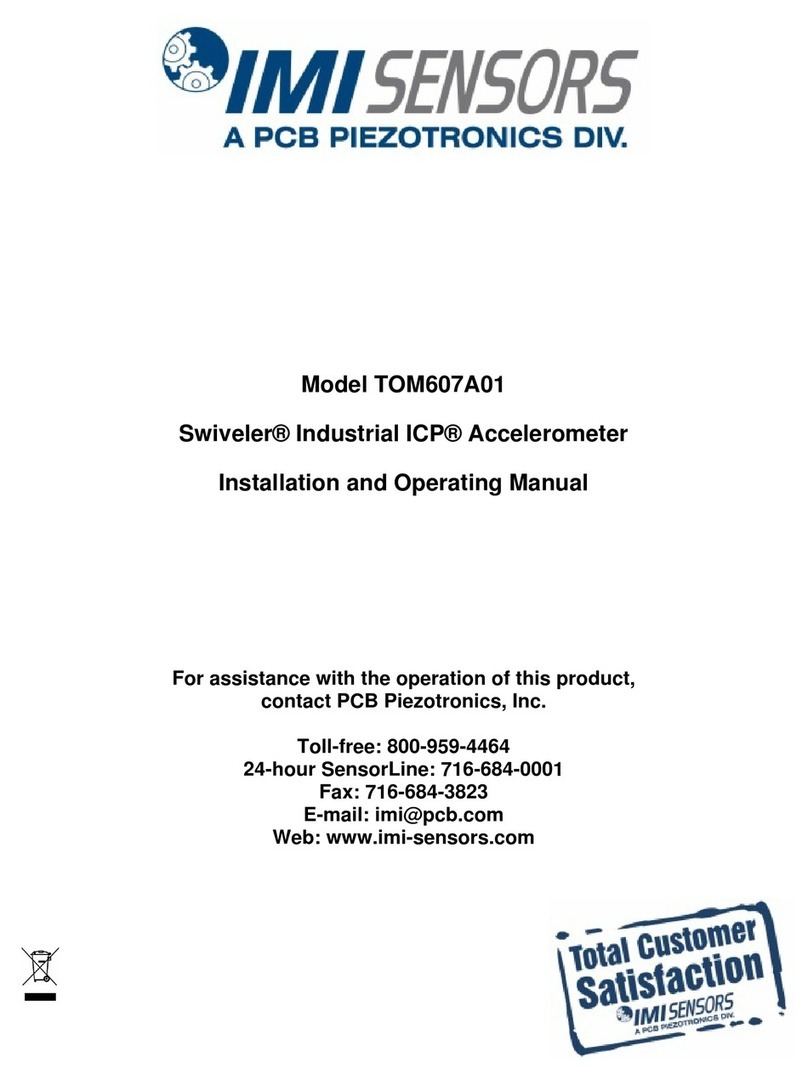
PCB Piezotronics
PCB Piezotronics IMI SENSORS TOM607A01 Installation and operating manual
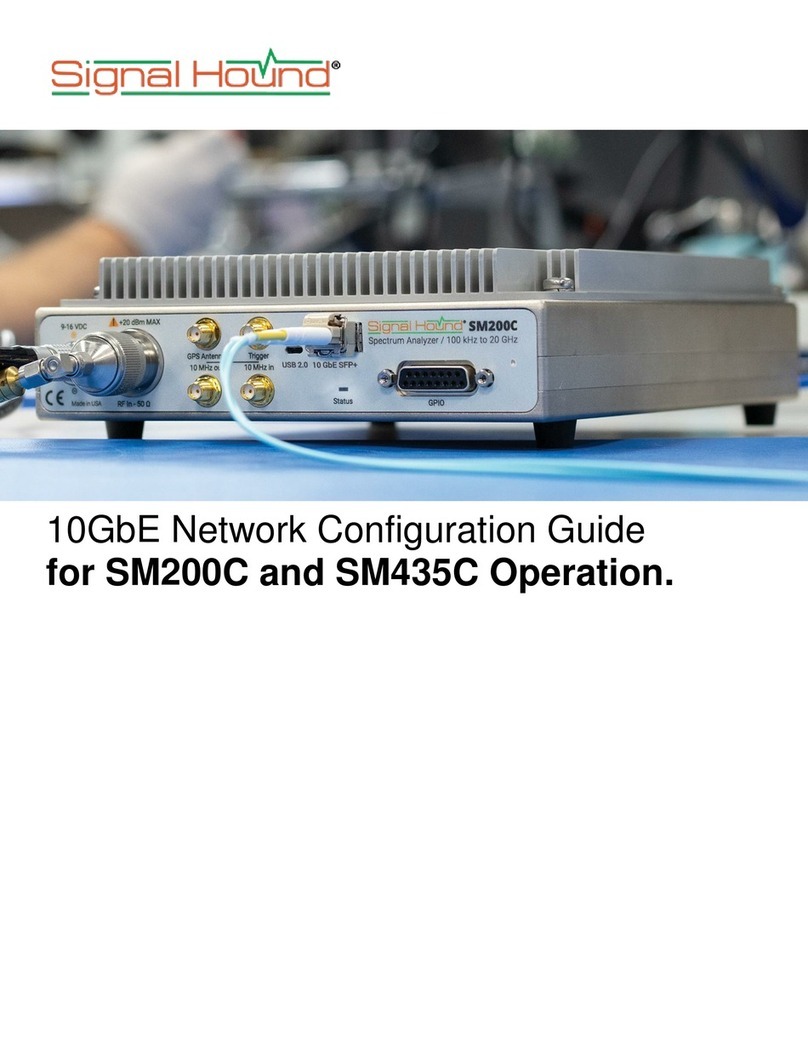
Signal Hound
Signal Hound SM200C Configuration guide

Sper scientific
Sper scientific AquaShock 850046K user manual

Colombo
Colombo 1280 manual
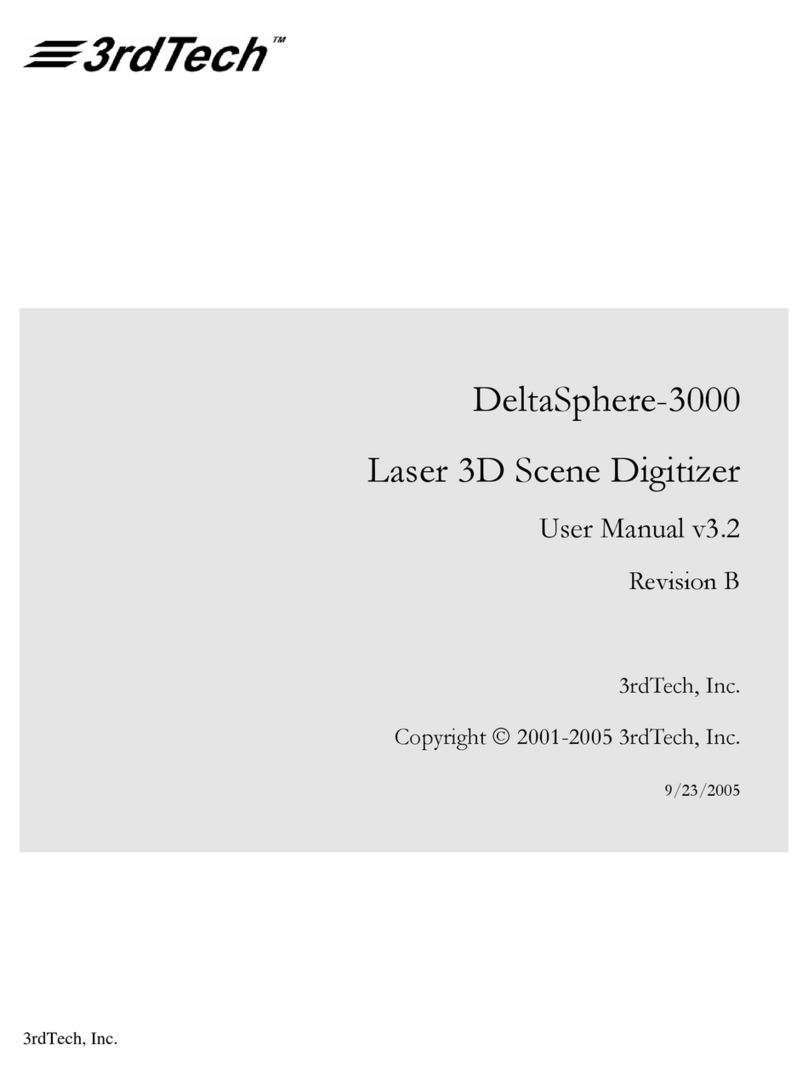
3rdTech
3rdTech DeltaSphere-3000 user manual
